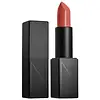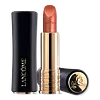What's inside
What's inside
 Key Ingredients
Key Ingredients

 Benefits
Benefits

 Concerns
Concerns

 Ingredients Side-by-side
Ingredients Side-by-side

Ricinus Communis Seed Oil
MaskingBis-Diglyceryl Polyacyladipate-2
EmollientEthylhexyl Palmitate
EmollientCandelilla Cera
EmollientEuphorbia Cerifera Wax
Isononyl Isononanoate
EmollientOzokerite
Emulsion StabilisingButyrospermum Parkii Butter
Skin ConditioningCetearyl Alcohol
EmollientHydrogenated Polycyclopentadiene
Cera Microcristallina
Emulsion StabilisingIsopropyl Myristate
EmollientSilica
AbrasiveCetearyl Ethylhexanoate
EmollientCeteareth-20
CleansingPropylene Carbonate
SolventPolyhydroxystearic Acid
EmulsifyingIsopropyl Titanium Triisostearate
EmollientStearalkonium Hectorite
Gel FormingPolyethylene
AbrasiveCaprylyl Glycol
EmollientCopernicia Cerifera Wax
Phenoxyethanol
PreservativeCoprinus Comatus Extract
AntioxidantLecithin
EmollientCalophyllum Inophyllum Seed Oil
AntimicrobialSimethicone
EmollientTocopheryl Acetate
AntioxidantSorbitan Isostearate
EmulsifyingDextrin
AbsorbentWater
Skin ConditioningHexylene Glycol
EmulsifyingHydrogenated Phosphatidylcholine
EmulsifyingLysolecithin
EmulsifyingPortulaca Pilosa Extract
Skin ConditioningTocopherol
AntioxidantSucrose Cocoate
EmulsifyingAscorbyl Palmitate
AntioxidantPalmitoyl Tripeptide-38
Skin ConditioningDisodium EDTA
Mica
Cosmetic ColorantCI 77891
Cosmetic ColorantCI 77491
Cosmetic ColorantCI 77492
Cosmetic ColorantCI 77499
Cosmetic ColorantCI 45410
Cosmetic ColorantCI 15850
Cosmetic ColorantCI 19140
Cosmetic ColorantRicinus Communis Seed Oil, Bis-Diglyceryl Polyacyladipate-2, Ethylhexyl Palmitate, Candelilla Cera, Euphorbia Cerifera Wax, Isononyl Isononanoate, Ozokerite, Butyrospermum Parkii Butter, Cetearyl Alcohol, Hydrogenated Polycyclopentadiene, Cera Microcristallina, Isopropyl Myristate, Silica, Cetearyl Ethylhexanoate, Ceteareth-20, Propylene Carbonate, Polyhydroxystearic Acid, Isopropyl Titanium Triisostearate, Stearalkonium Hectorite, Polyethylene, Caprylyl Glycol, Copernicia Cerifera Wax, Phenoxyethanol, Coprinus Comatus Extract, Lecithin, Calophyllum Inophyllum Seed Oil, Simethicone, Tocopheryl Acetate, Sorbitan Isostearate, Dextrin, Water, Hexylene Glycol, Hydrogenated Phosphatidylcholine, Lysolecithin, Portulaca Pilosa Extract, Tocopherol, Sucrose Cocoate, Ascorbyl Palmitate, Palmitoyl Tripeptide-38, Disodium EDTA, Mica, CI 77891, CI 77491, CI 77492, CI 77499, CI 45410, CI 15850, CI 19140
Pentaerythrityl Isostearate/Caprate/Caprylate/Adipate
EmollientMacadamia Ternifolia Seed Oil
EmollientOctyldodecyl Stearate
EmollientPEG-45/Dodecyl Glycol Copolymer
Emulsion StabilisingAlumina
AbrasiveCera Microcristallina
Emulsion StabilisingPolyglyceryl-3 Beeswax
EmulsifyingParaffin
PerfumingHydrogenated Castor Oil Dimer Dilinoleate
Skin ConditioningMica
Cosmetic ColorantBis-Diglyceryl Polyacyladipate-2
EmollientCI 15850
Cosmetic ColorantCI 77491
Cosmetic ColorantCI 77891
Cosmetic ColorantRosa Centifolia Flower Extract
AstringentRosa Damascena Flower Oil
MaskingRosa Hybrid Flower Extract
Skin ConditioningTin Oxide
AbrasiveWater
Skin ConditioningGlucomannan
Skin ConditioningTrihydroxystearin
Skin ConditioningSodium Hyaluronate
HumectantSilica
AbrasiveAluminum Hydroxide
EmollientAlcohol
AntimicrobialPropylene Glycol
HumectantHydroxypalmitoyl Sphinganine
Skin ConditioningHydroxypropyl Tetrahydropyrantriol
Skin ConditioningSynthetic Wax
AbrasiveDisteardimonium Hectorite
StabilisingEthylhexyl Palmitate
EmollientTocopherol
AntioxidantTocopheryl Acetate
AntioxidantPentaerythrityl Tetra-Di-T-Butyl Hydroxyhydrocinnamate
AntioxidantCI 77492
Cosmetic ColorantCI 77499
Cosmetic ColorantCI 19140
Cosmetic ColorantGeraniol
PerfumingMethyl 2-Octynoate
PerfumingHydroxycitronellal
PerfumingCitronellol
PerfumingHexyl Cinnamal
PerfumingBenzyl Alcohol
PerfumingParfum
MaskingPentaerythrityl Isostearate/Caprate/Caprylate/Adipate, Macadamia Ternifolia Seed Oil, Octyldodecyl Stearate, PEG-45/Dodecyl Glycol Copolymer, Alumina, Cera Microcristallina, Polyglyceryl-3 Beeswax, Paraffin, Hydrogenated Castor Oil Dimer Dilinoleate, Mica, Bis-Diglyceryl Polyacyladipate-2, CI 15850, CI 77491, CI 77891, Rosa Centifolia Flower Extract, Rosa Damascena Flower Oil, Rosa Hybrid Flower Extract, Tin Oxide, Water, Glucomannan, Trihydroxystearin, Sodium Hyaluronate, Silica, Aluminum Hydroxide, Alcohol, Propylene Glycol, Hydroxypalmitoyl Sphinganine, Hydroxypropyl Tetrahydropyrantriol, Synthetic Wax, Disteardimonium Hectorite, Ethylhexyl Palmitate, Tocopherol, Tocopheryl Acetate, Pentaerythrityl Tetra-Di-T-Butyl Hydroxyhydrocinnamate, CI 77492, CI 77499, CI 19140, Geraniol, Methyl 2-Octynoate, Hydroxycitronellal, Citronellol, Hexyl Cinnamal, Benzyl Alcohol, Parfum
Ingredients Explained
These ingredients are found in both products.
Ingredients higher up in an ingredient list are typically present in a larger amount.
This ingredient is lipid-based synthetic skin-conditioning agent derived from adipic acid and a mixture of fatty acids. It is often called a lanolin substitute.
As an emollient, it helps soften and hydrate the skin. Emollients create a barrier on the skin to trap moisture in.
Due to its fatty acid base, it may not be Malassezia folliculitis safe.
Learn more about Bis-Diglyceryl Polyacyladipate-2Cera Microcristallina isn't fungal acne safe.
Ci 15850 is the pigment color red. It is an azo dye and created synthetically.
Azo dyes need to be thoroughly purified before use. This allows them to be more stable and longer-lasting.
This ingredient is common in foundations, lipsticks, and blushes. This color is described as brown/orangey red.
It has many secondary names such as Red 6 and Red 7. According to a manufacturer, Red 6 usually contains aluminum.
Learn more about CI 15850CI 19140 is also known as Tartrazine. Tartrazine is a synthetic dye used in cosmetics, foods, and medicine to add a yellow color.
Tartrazine is created from petroleum and is water-soluble.
Some people may experience allergies from this dye, especially asthmatics and those with an aspirin intolerance.
Learn more about CI 19140Ci 77491 is also hydrated iron III oxide. It's sole purpose is to give a red/pink hue to products.
Iron III oxides are classified as inorganic chemicals for coloring.
Synthetically created Ci 77491 is considered safer than those naturally found. This is because the synthetically created version may contain less impurities. Iron oxides are generally non-toxic and non-allergenic.
Learn more about CI 77491Ci 77492 is also hydrated iron III oxide. It's sole purpose is to give a yellow hue to products.
Iron III oxides are classified as inorganic chemicals for coloring.
Synthetically created Ci 77492 is considered safer than those naturally found. This is because the synthetically created version may contain less impurities. Iron oxides are generally non-toxic and non-allergenic.
Learn more about CI 77492Ci 77499 is also hydrated iron III oxide. It is created from mixing red and black iron oxides. This helps give shades of darkness to a product.
Iron III oxides are classified as inorganic chemicals for coloring.
Ci 77891 is a white pigment from Titanium dioxide. It is naturally found in minerals such as rutile and ilmenite.
It's main function is to add a white color to cosmetics. It can also be mixed with other colors to create different shades.
Ci 77891 is commonly found in sunscreens due to its ability to block UV rays.
Learn more about CI 77891Ethylhexyl Palmitate, also known as octyl palmitate, is created from 2-ethylhexyl alcohol and palmitic acid. It is a fatty acid ester.
The fatty acid content of Ethylhexyl Palmitate makes it an emollient. Emollients help soften and hydrate your skin by trapping moisture within.
Ethylhexyl Palmitate is also used to help improve the texture of cosmetics. It helps other ingredient dissolve in products and help disperse ingredients more evenly.
You'll likely find this ingredient in sunscreen, as it is often used to mix UV-blocking ingredients such as avobenzone and ethylhexyl triazone.
It can also help stabilize the fragrances in a product as a fragrance fixative.
Ethylhexyl Palmitate can be used to substitute mineral oil.
Due to its high fatty acid content, it may not be fungal-acne safe.
Learn more about Ethylhexyl PalmitateMica is a naturally occurring mineral used to add shimmer and color in cosmetics. It can also help improve the texture of a product or give it an opaque, white/silver color.
Serecite is the name for very fine but ragged grains of mica.
This ingredient is often coated with metal oxides like titanium dioxide. Trace amounts of heavy metals may be found in mica, but these metals are not harmful in our personal products.
Mica has been used since prehistoric times throughout the world. Ancient Egyptian, Indian, Greek, Roman, Aztec, and Chinese civilizations have used mica.
Learn more about MicaSilica, also known as silicon dioxide, is a naturally occurring mineral. It is used as a fine, spherical, and porous powder in cosmetics.
Though it has exfoliant properties, the function of silica varies depending on the product.
The unique structure of silica enhances the spreadability and adds smoothness, making it a great texture enhancer.
It is also used as an active carrier, emulsifier, and mattifier due to its ability to absorb excess oil.
In some products, tiny microneedles called spicules are made from silica or hydrolyzed sponge. When you rub them in, they lightly polish away dead skin layers and enhance the penetration of active ingredients.
Learn more about SilicaTocopherol (also known as Vitamin E) is a common antioxidant used to help protect the skin from free-radicals and strengthen the skin barrier. It's also fat soluble - this means our skin is great at absorbing it.
Vitamin E also helps keep your natural skin lipids healthy. Your lipid skin barrier naturally consists of lipids, ceramides, and fatty acids. Vitamin E offers extra protection for your skin’s lipid barrier, keeping your skin healthy and nourished.
Another benefit is a bit of UV protection. Vitamin E helps reduce the damage caused by UVB rays. (It should not replace your sunscreen). Combining it with Vitamin C can decrease sunburned cells and hyperpigmentation after UV exposure.
You might have noticed Vitamin E + C often paired together. This is because it is great at stabilizing Vitamin C. Using the two together helps increase the effectiveness of both ingredients.
There are often claims that Vitamin E can reduce/prevent scarring, but these claims haven't been confirmed by scientific research.
Learn more about TocopherolTocopheryl Acetate is AKA Vitamin E. It is an antioxidant and protects your skin from free radicals. Free radicals damage the skin by breaking down collagen.
One study found using Tocopheryl Acetate with Vitamin C decreased the number of sunburned cells.
Tocopheryl Acetate is commonly found in both skincare and dietary supplements.
Learn more about Tocopheryl AcetateWater. It's the most common cosmetic ingredient of all. You'll usually see it at the top of ingredient lists, meaning that it makes up the largest part of the product.
So why is it so popular? Water most often acts as a solvent - this means that it helps dissolve other ingredients into the formulation.
You'll also recognize water as that liquid we all need to stay alive. If you see this, drink a glass of water. Stay hydrated!
Learn more about Water